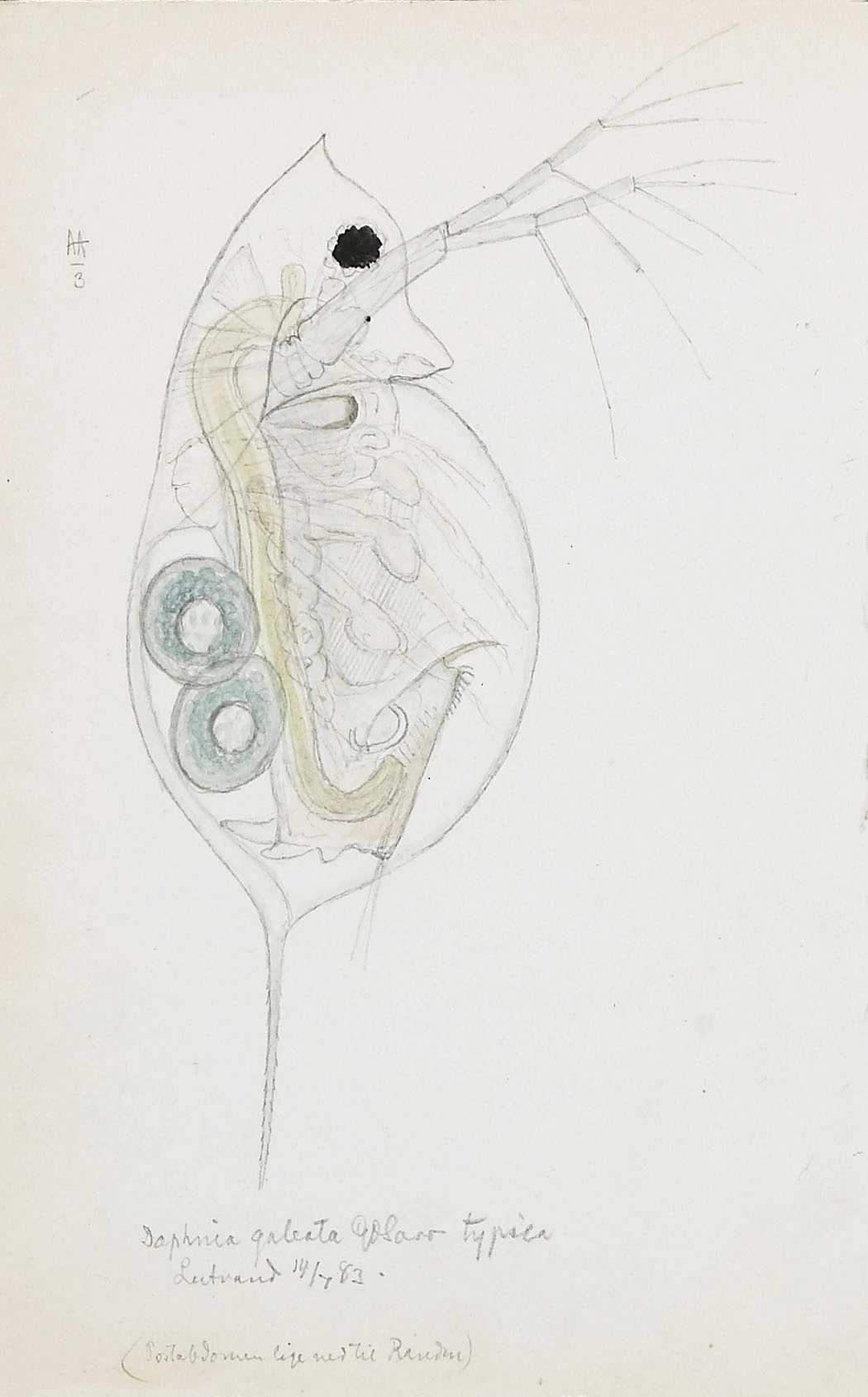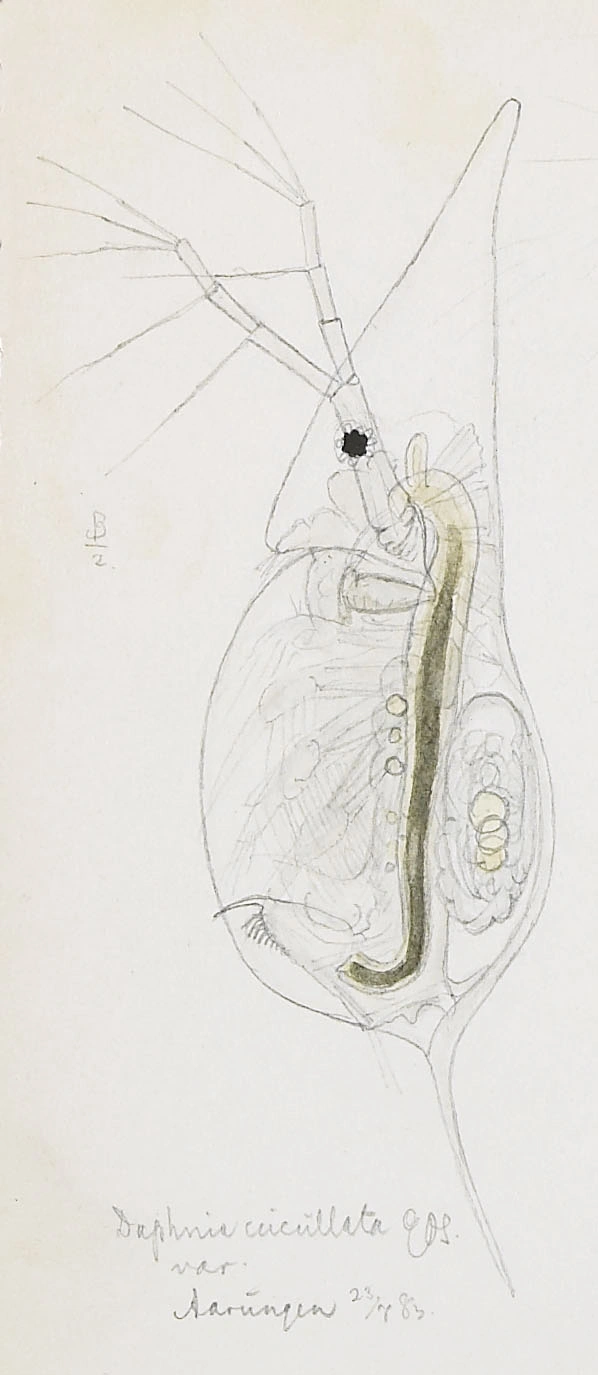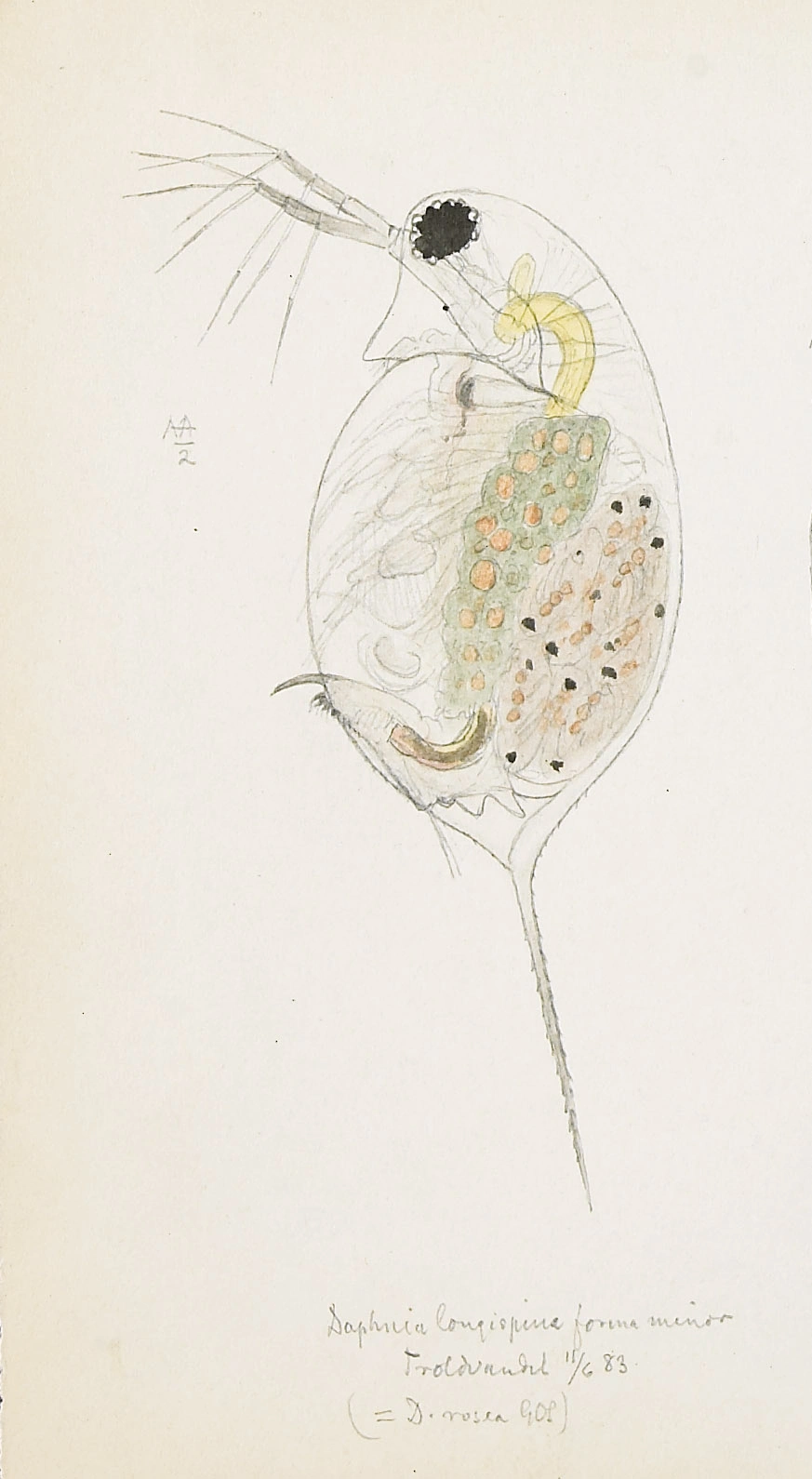Daphnia galeata
Daphnia galeata has a helmet which is characterised by a protruding part erected from its curved head. Among daphnids in Norway, only D. longispina is more common. It is known as an acid sensitive species widely spread in the country.
Key characteristics
Daphnia galeata (female)
Daphnia galeata (male)
Daphnia galeata can be easily distinguished from all other daphnids when the helmet is fully developed in late autumn. It is characterised by the protruding part erected from the curved head. Its helmet also differs from the helmet of D. cristata and D. cucullata which is more pointed. Furthermore, the latter two species have no eyespot (oscellus) in contrast to D. longspina and D. galeata which have. D. galeata also has a fully developed bristle on the first joint of the three-segmented branch of the second pair of antennae. It is rather hyaline, sometimes with a yellowish tinge.
Female: Length 0.8–2.9 mm
Male: Length 0.9–1.4 mm
Ecology and distribution
D. galeata is distributed all over the country, and occurs in more than 20 % of the water bodies where zooplankton is sampled. Among daphnids in Norway, only D. longispina is more common. Though it has been found at 1373 m a.s.l., it is most common below 500 m a.s.l. There are a few records from weakly acidic water, but the great majority of localities have pH>6.0. Medium electrolyte rich waters seem to favourite the species.
| Vitenskapelig navn | < 4,5 | 4,5 - 4,9 | 5,0 - 5,4 | 5,5 - 5,9 | 6,0 - 6,4 | 6,5 - 7,0 | 7,0 - 7,4 | > 7,5 |
|---|---|---|---|---|---|---|---|---|
| 0 | 0,5 | 2 | 6,5 | 20 | 28,4 | 44,2 | 33,7 |
| Vitenskapelig navn | < 1,0 | 1,0 - 1,4 | 1,5 - 1,9 | 2,0 - 2,9 | 3,0 - 3,9 | 4,0 - 4,9 | 5,0 - 6,9 | 7,0 - 9,9 | > 10,0 |
|---|---|---|---|---|---|---|---|---|---|
| 2 | 4,6 | 8 | 17,2 | 31,1 | 33,1 | 42,9 | 43 | 18,9 |
| Vitenskapelig navn | < 0,01 | 0,01 - 0,09 | 0,1 - 0,9 | 1,0 - 9,9 | 10,0 - 99 | 100 - 999 | > 1000 |
|---|---|---|---|---|---|---|---|
| 0 | 2 | 1,5 | 13,9 | 19,5 | 31,9 | 46,6 |
| Vitenskapelig navn | < 100 | 100-299 | 300-499 | 500-699 | 700-999 | >1000 |
|---|---|---|---|---|---|---|
| 41,3 | 16 | 19,3 | 13,9 | 13,1 | 1,4 |
Look-alikes
Daphnia sp exept for D. magna and D. pulex





